When designing an ideal bathroom, vanity height is often overlooked, yet it plays a crucial role in daily comfort. A vanity that is too low requires frequent bending, leading to back strain, while a vanity that is too high can make washing up inconvenient. So, what is the standard height for a bathroom vanity? How do you choose the most ergonomic height to ensure daily comfort? In this article, Giving Tree Home provides the answers.
Bathroom Vanity Dimensions Overview
While this article primarily focuses on vanity height, understanding the overall dimensions is equally important when selecting the right vanity. This helps ensure proper installation and avoids issues related to mismatched sizes.
At Giving Tree Home, we typically provide front dimensions and rear dimensions for our vanities, as shown below:
-
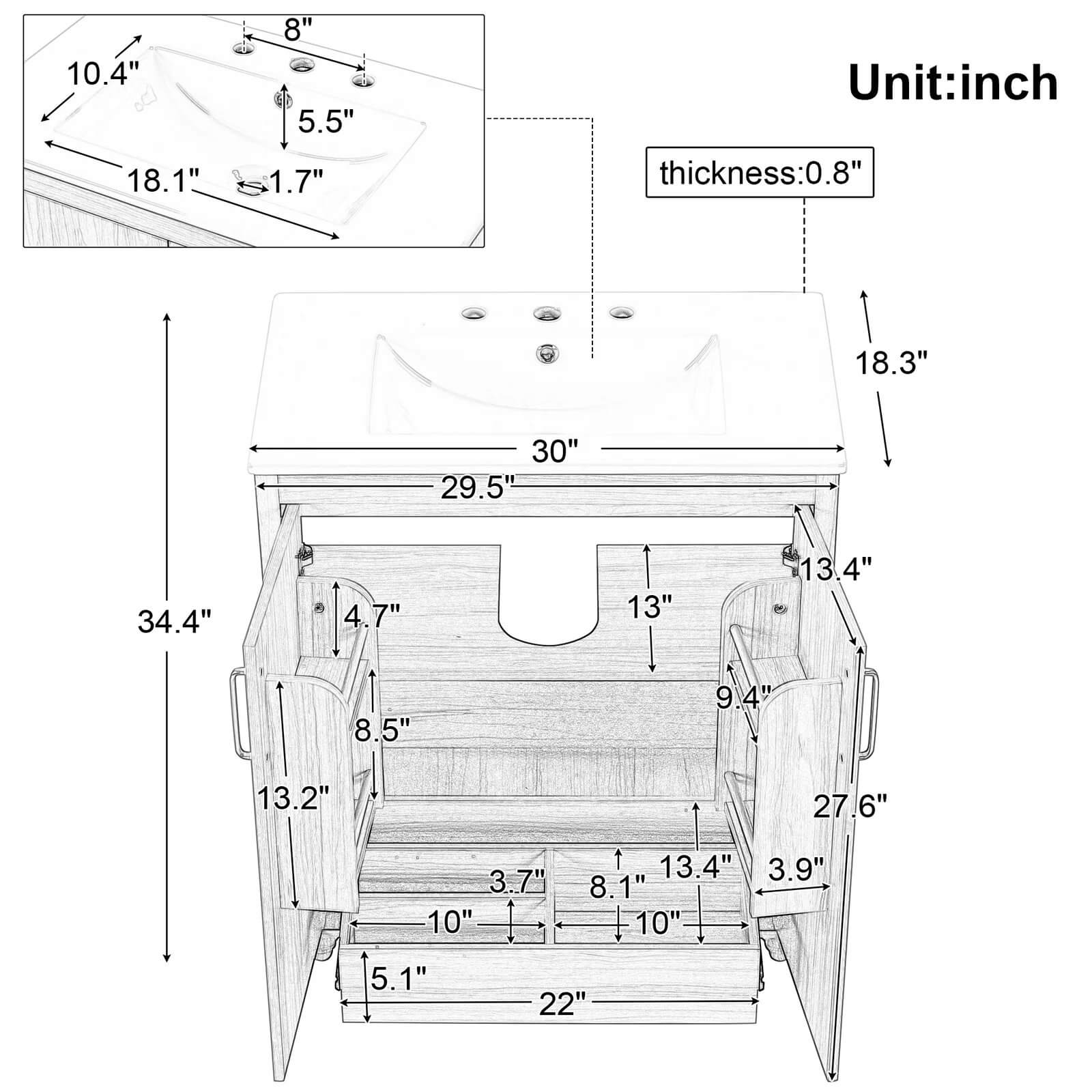
Front Dimensions
These include the overall length, width, height, and specific measurements of drawers and cabinet doors. If purchasing the cabinet and countertop separately, double-check the dimensions to ensure compatibility and avoid installation errors.
-
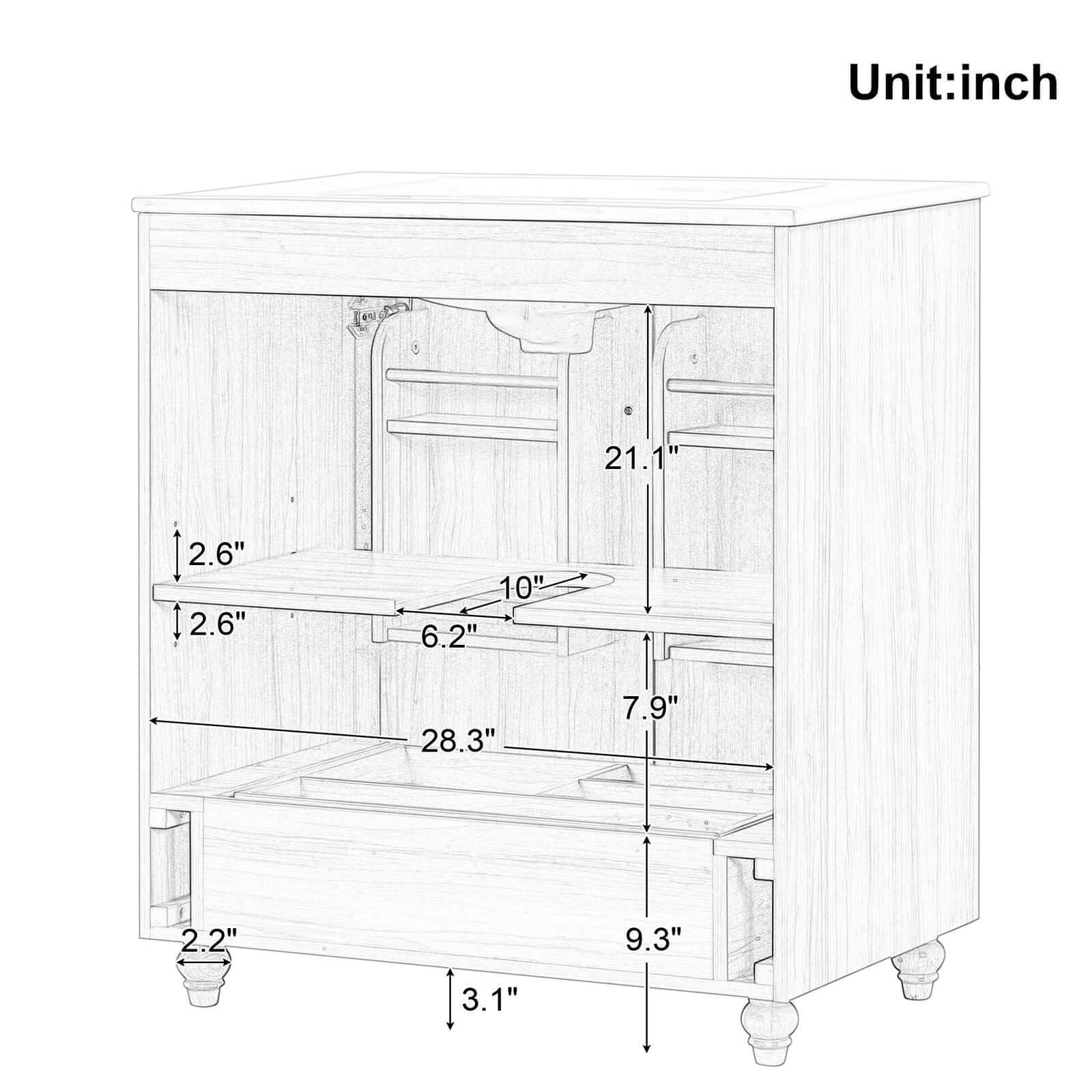
Rear Dimensions
This section includes more detailed structural specifications, such as leg width and panel thickness. The most critical aspect is the U-shaped cutout design, usually located at the back panel or drawer section, which allows space for plumbing. Be sure to check these dimensions to ensure they align with your bathroom's plumbing layout for a seamless installation.
Standard Height vs. Comfortable Height
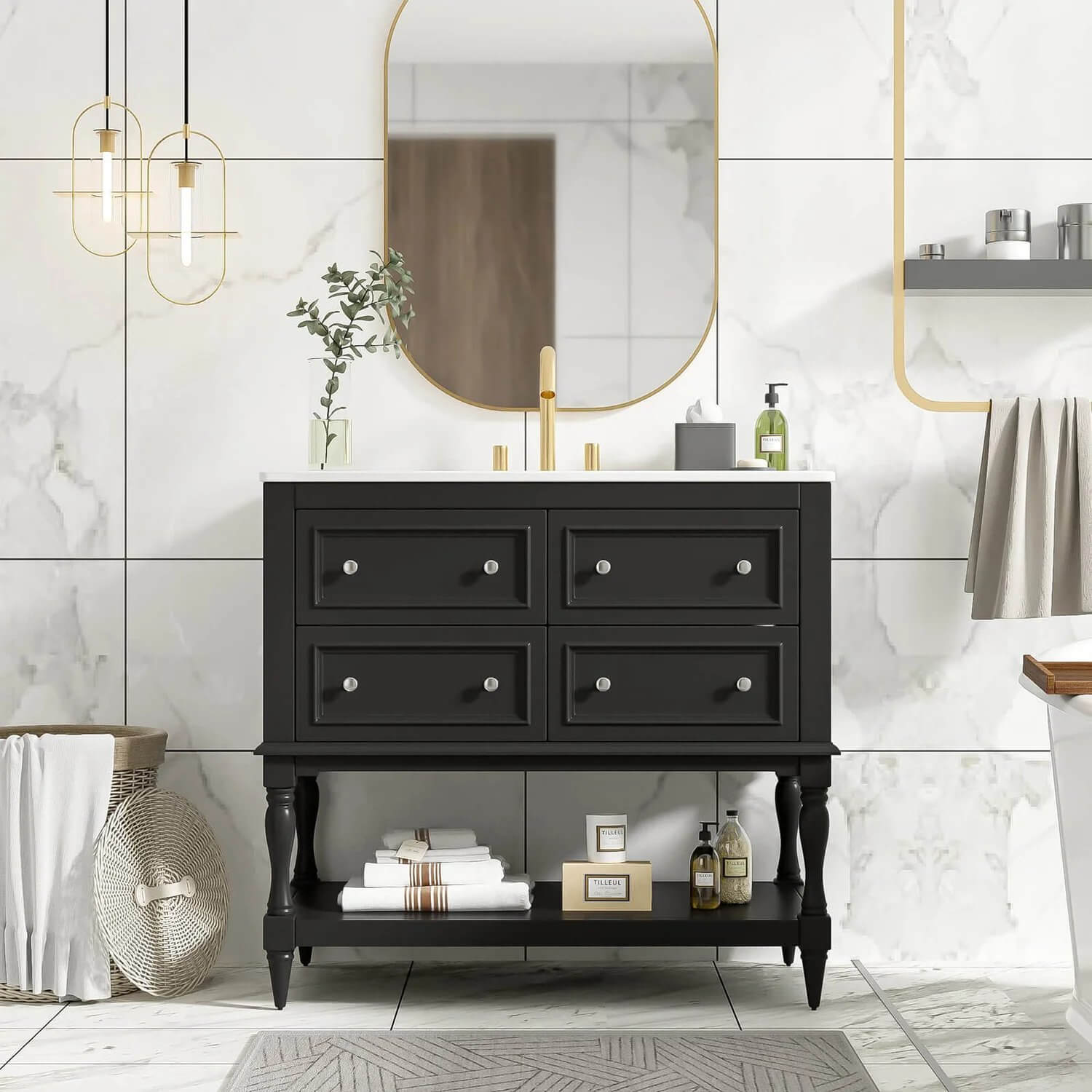
Standard Height
Average height of bathroom vanities on the market fall within 30"-34", which aligns with the ADA (Americans with Disabilities Act) standard of 28"-34". This height range accommodates users of various heights, making it ideal for both residential and public restrooms. It is particularly suitable for multi-generational households with children, adults, and elderly family members. If you're looking for a universally comfortable option, a standard-height vanity is a safe choice.
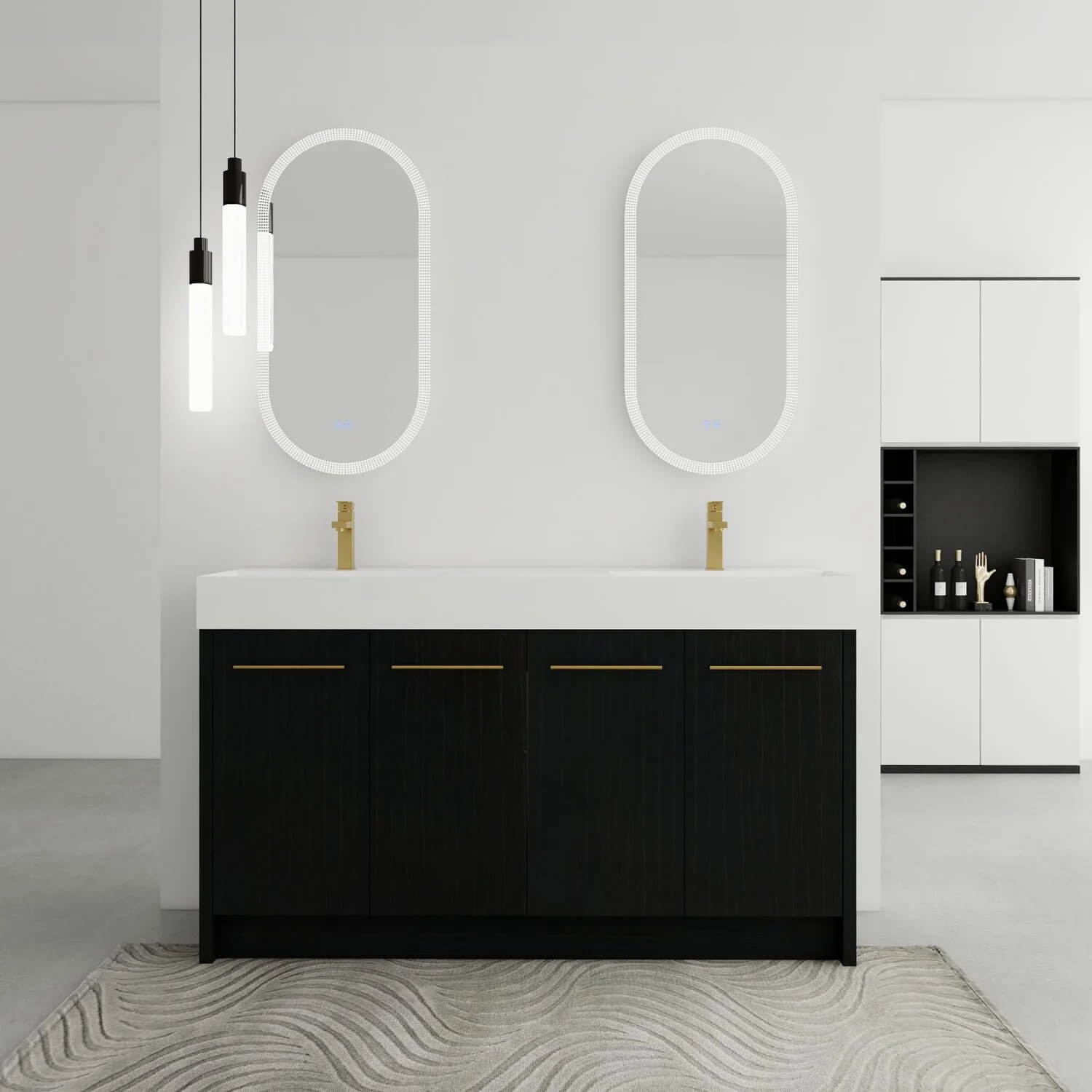
Comfortable Height
For primary bathroom vanities, especially if the main user is around 6 feet (183 cm) tall, a 36-inch height vanity is recommended. This height reduces back strain from frequent bending and minimizes water splashing during daily use.
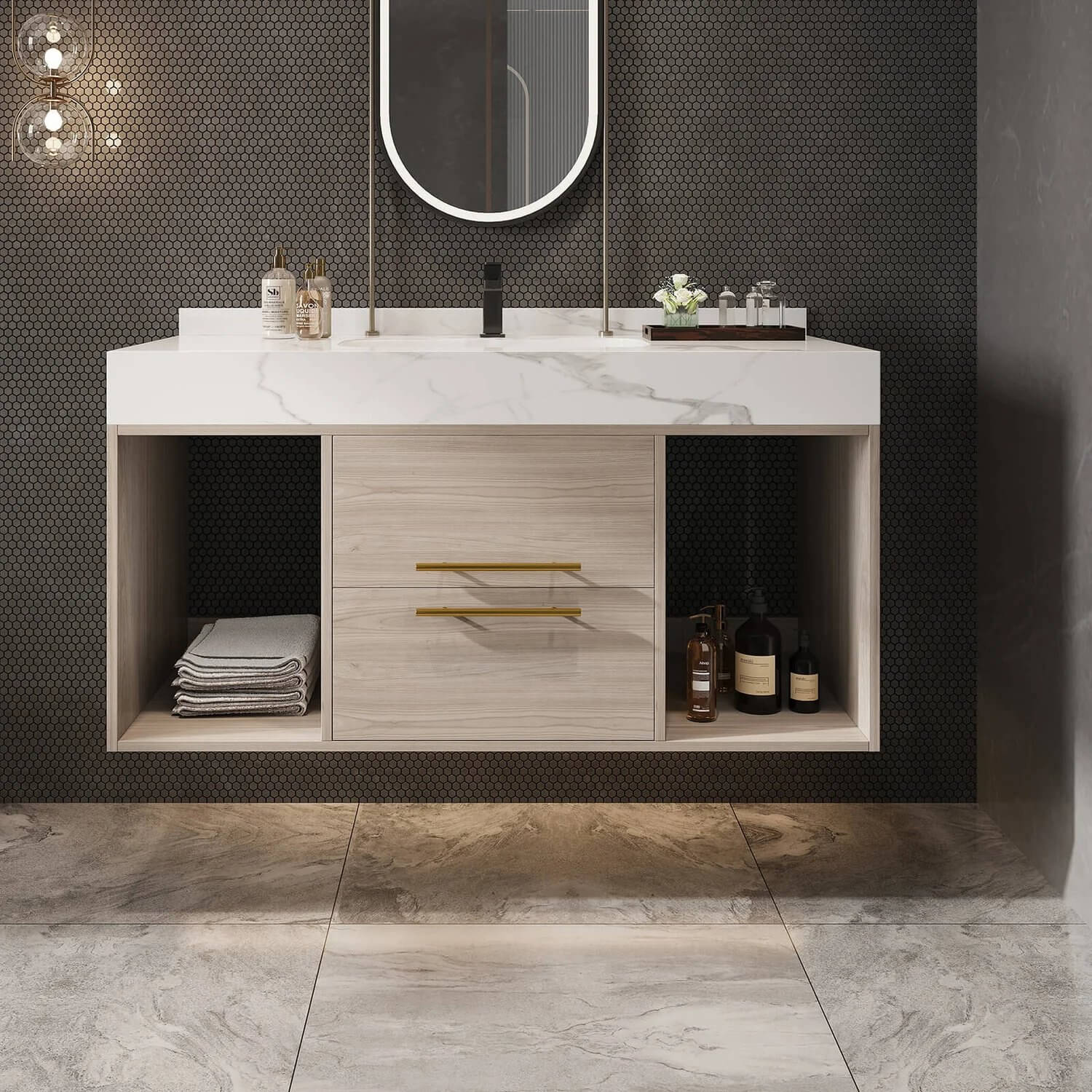
Customized Options
For those who cannot find the perfect height on the market or have special height requirements, a wall-mounted vanity is an excellent solution. This design allows you to adjust the mounting height to suit your needs while offering additional benefits such as better space utilization and easier cleaning. If you want a vanity tailored to your personal preferences, consider this flexible installation method.
Best Selling
-
30 Inch Bathroom Vanity with Sink Floor Mounted One-Piece Sink Cabinet
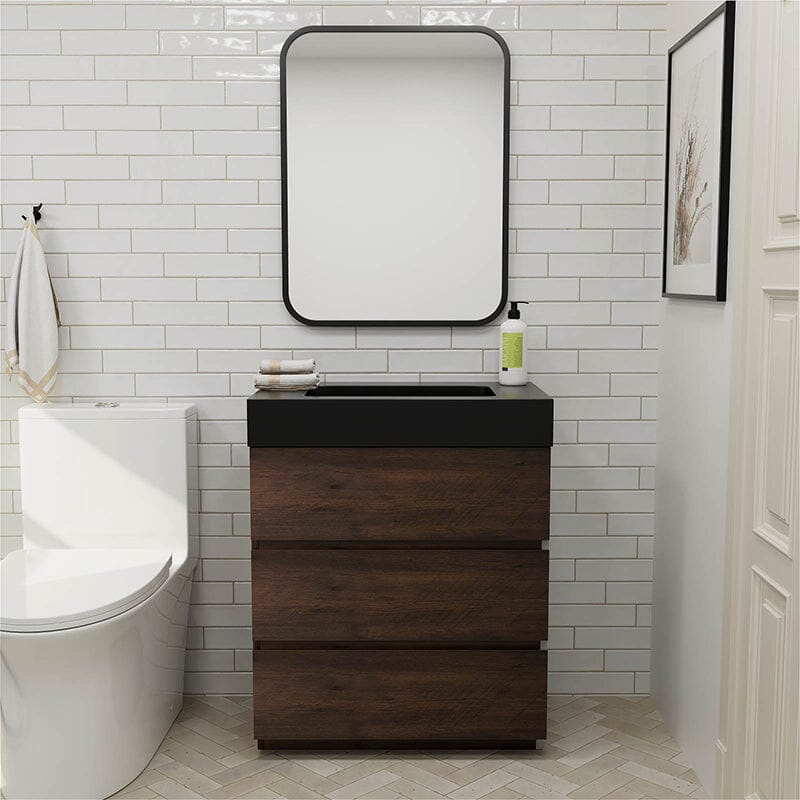
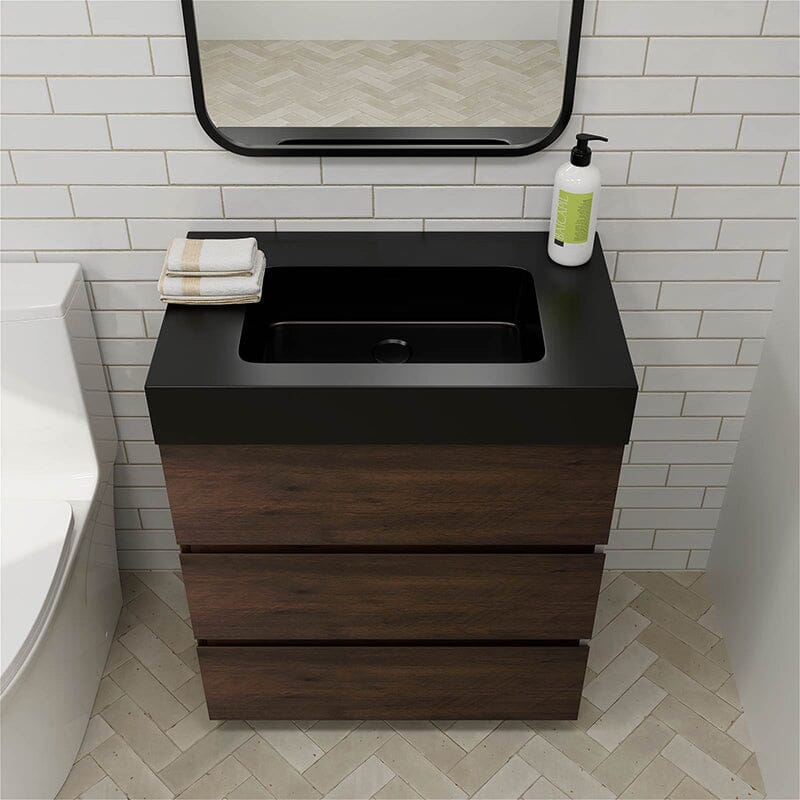 30 Inch Bathroom Vanity with Sink Floor Mounted One-Piece Sink Cabinet
30 Inch Bathroom Vanity with Sink Floor Mounted One-Piece Sink Cabinet- Regular price
-
$929.99 $949.00 - Regular price
-
- Sale price
-
$929.99 $949.00
Quick view
-
36" Traditional Blue Bathroom Vanity with Resin Sink
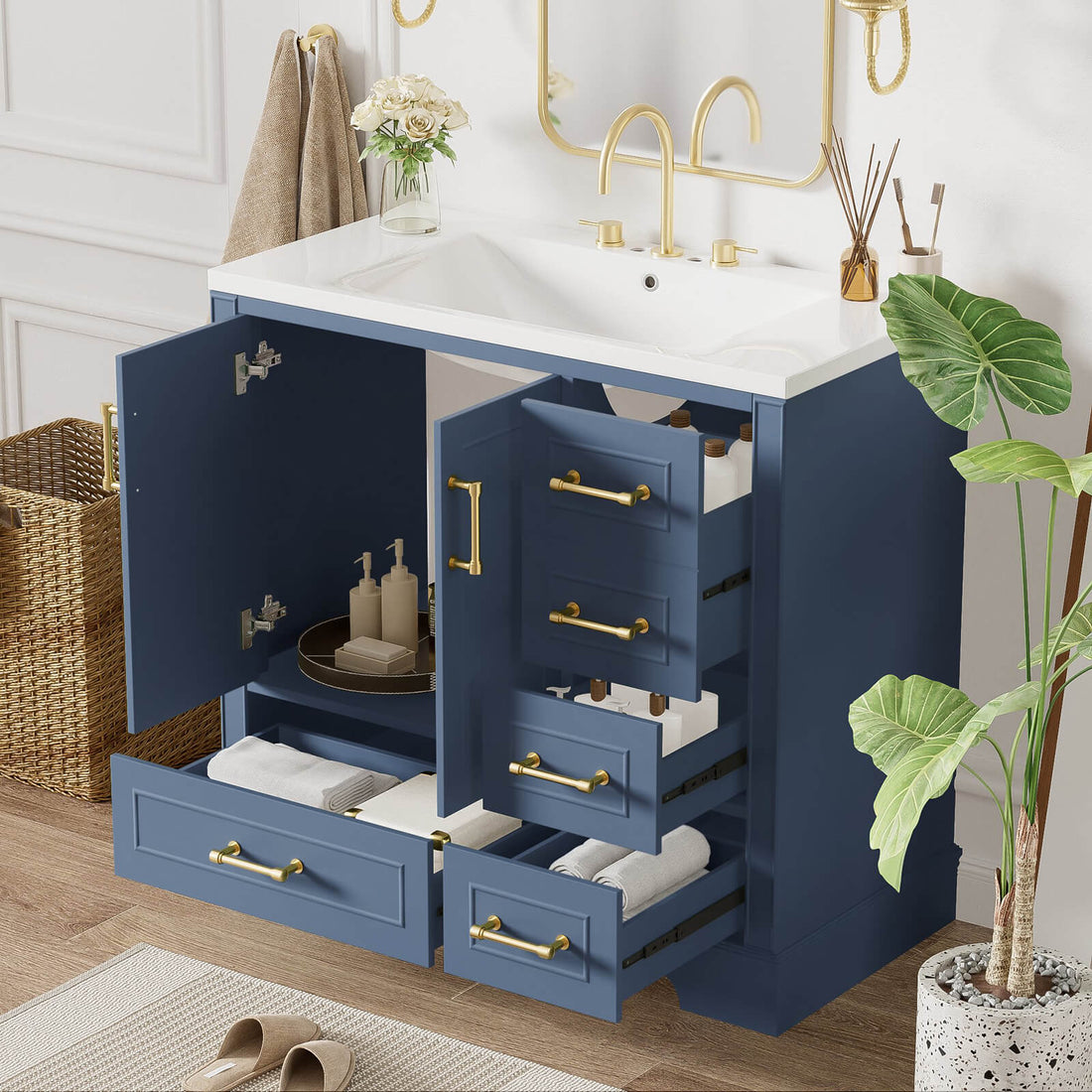
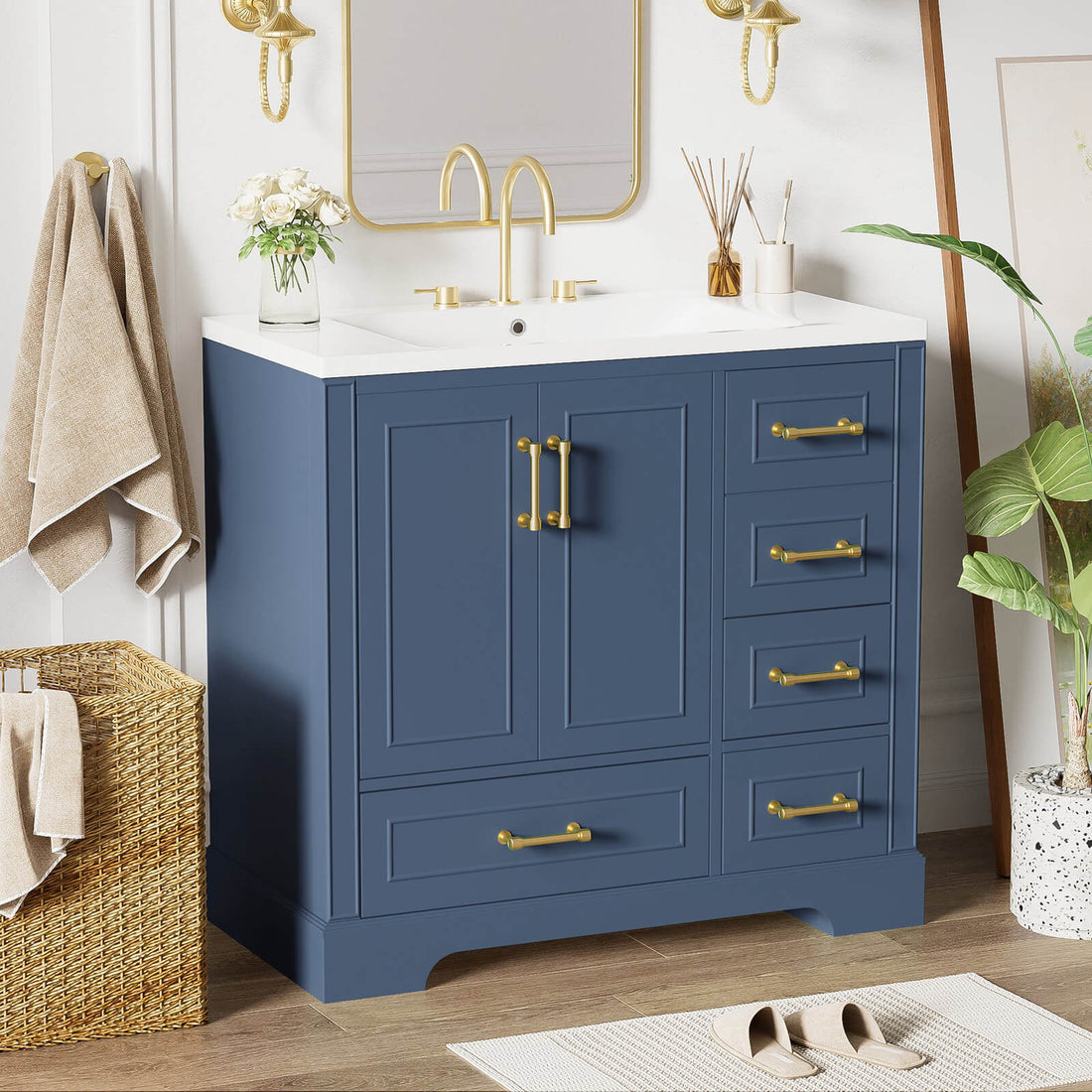 36" Traditional Blue Bathroom Vanity with Resin Sink
36" Traditional Blue Bathroom Vanity with Resin Sink- Regular price
-
$669.89 - Regular price
-
- Sale price
-
$669.89
Quick view
-
48" Cement Gray Floating Bathroom Vanity
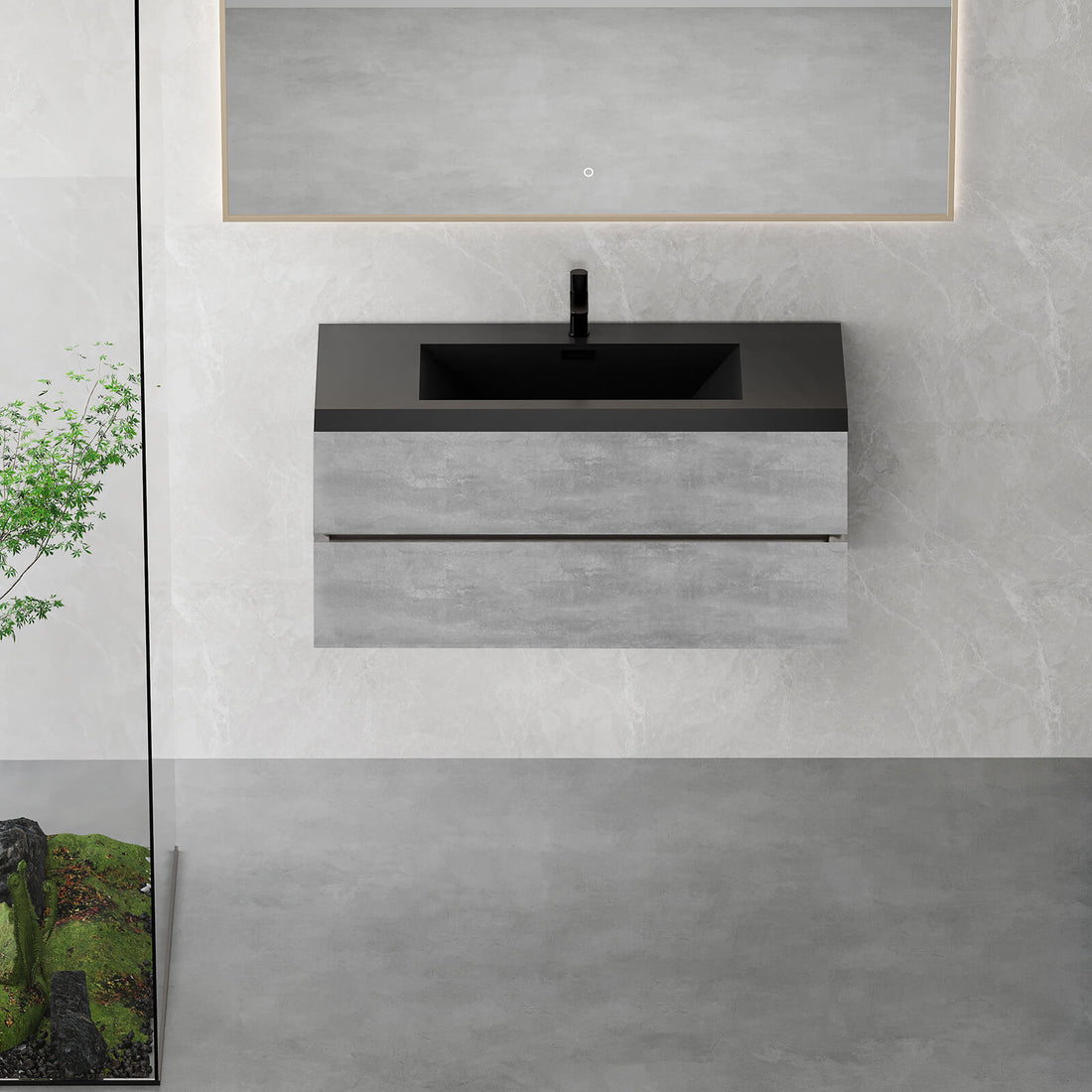
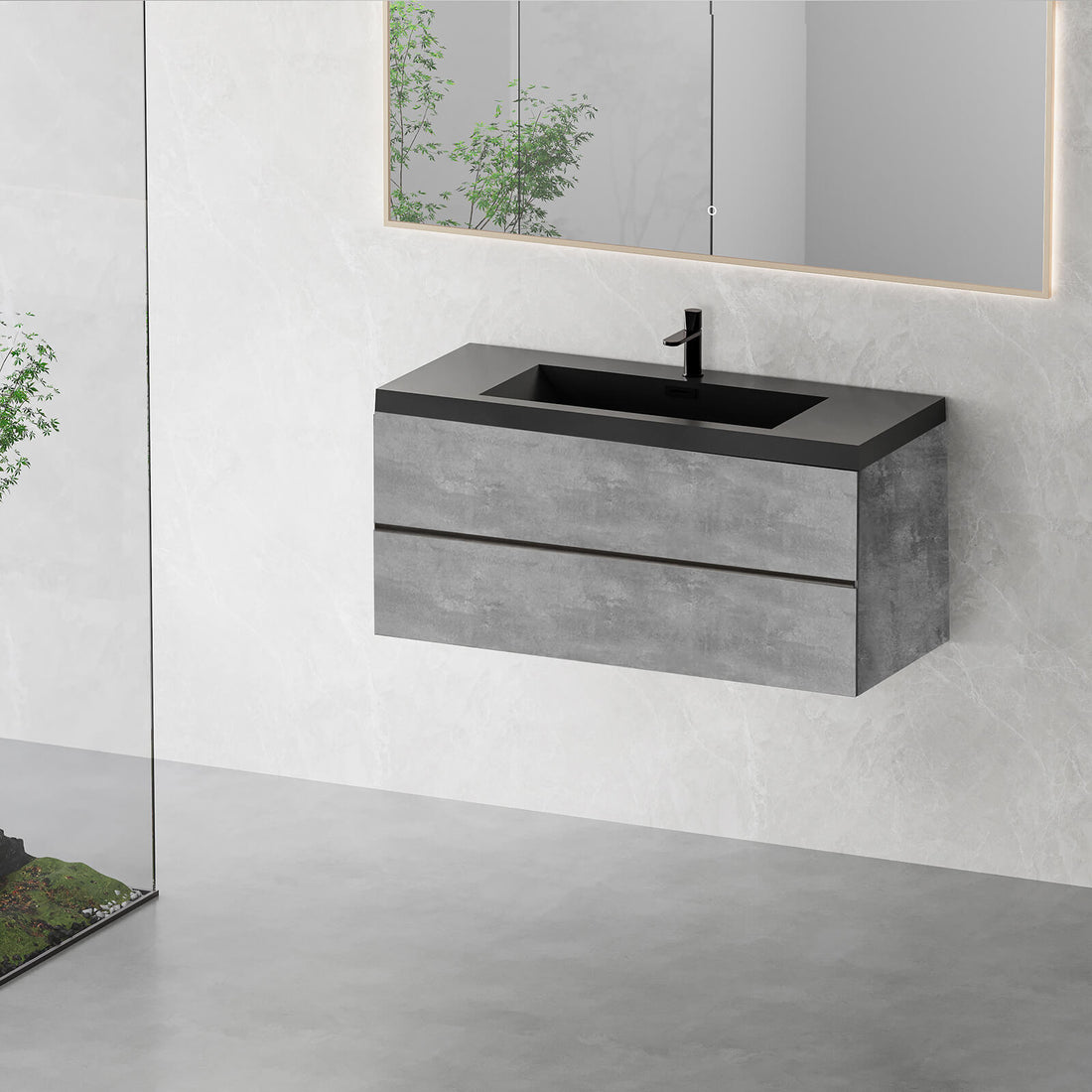 48" Cement Gray Floating Bathroom Vanity
48" Cement Gray Floating Bathroom Vanity- Regular price
-
$1,739.98 - Regular price
-
- Sale price
-
$1,739.98
Quick view
-
61" White Double Sink Vanity with Backsplash
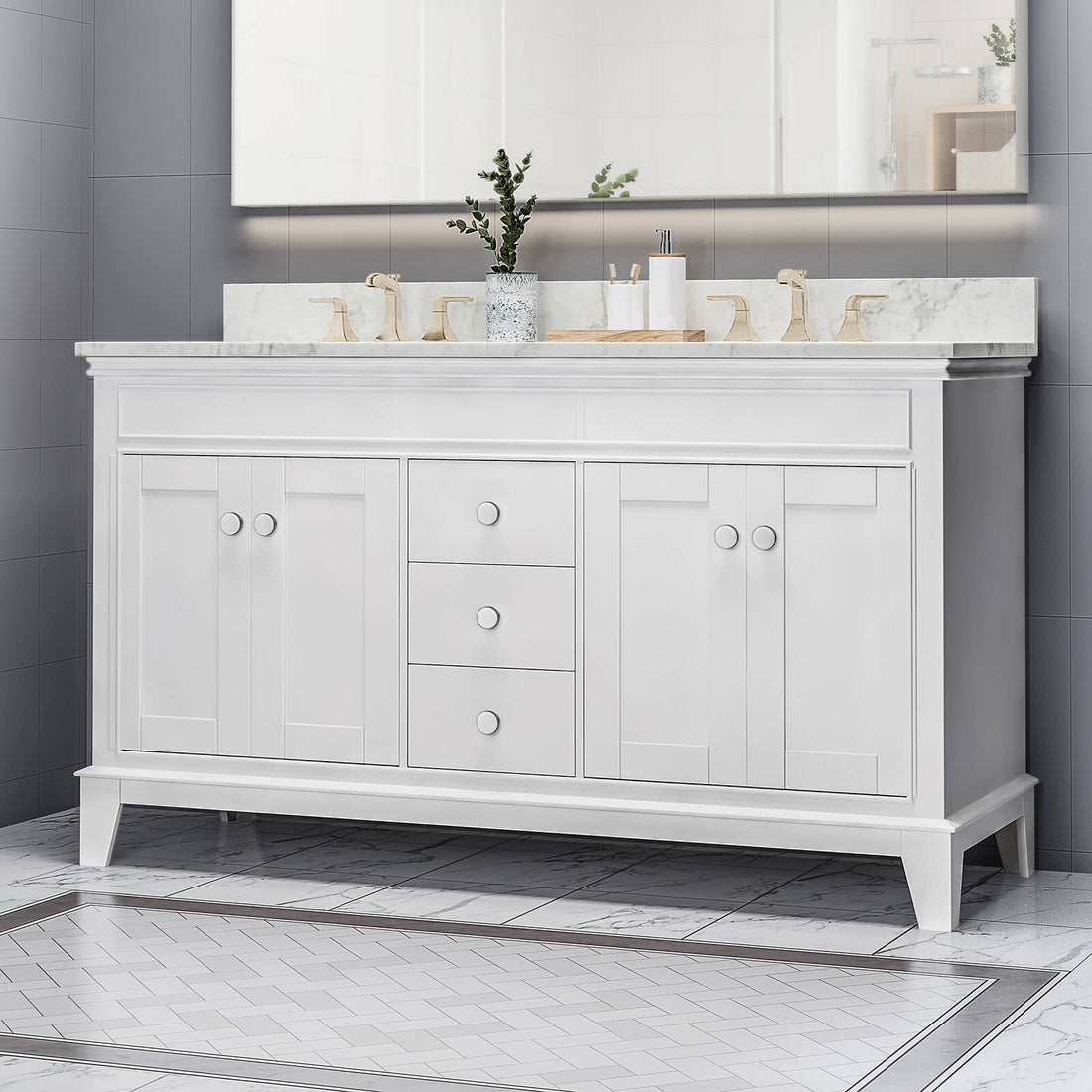
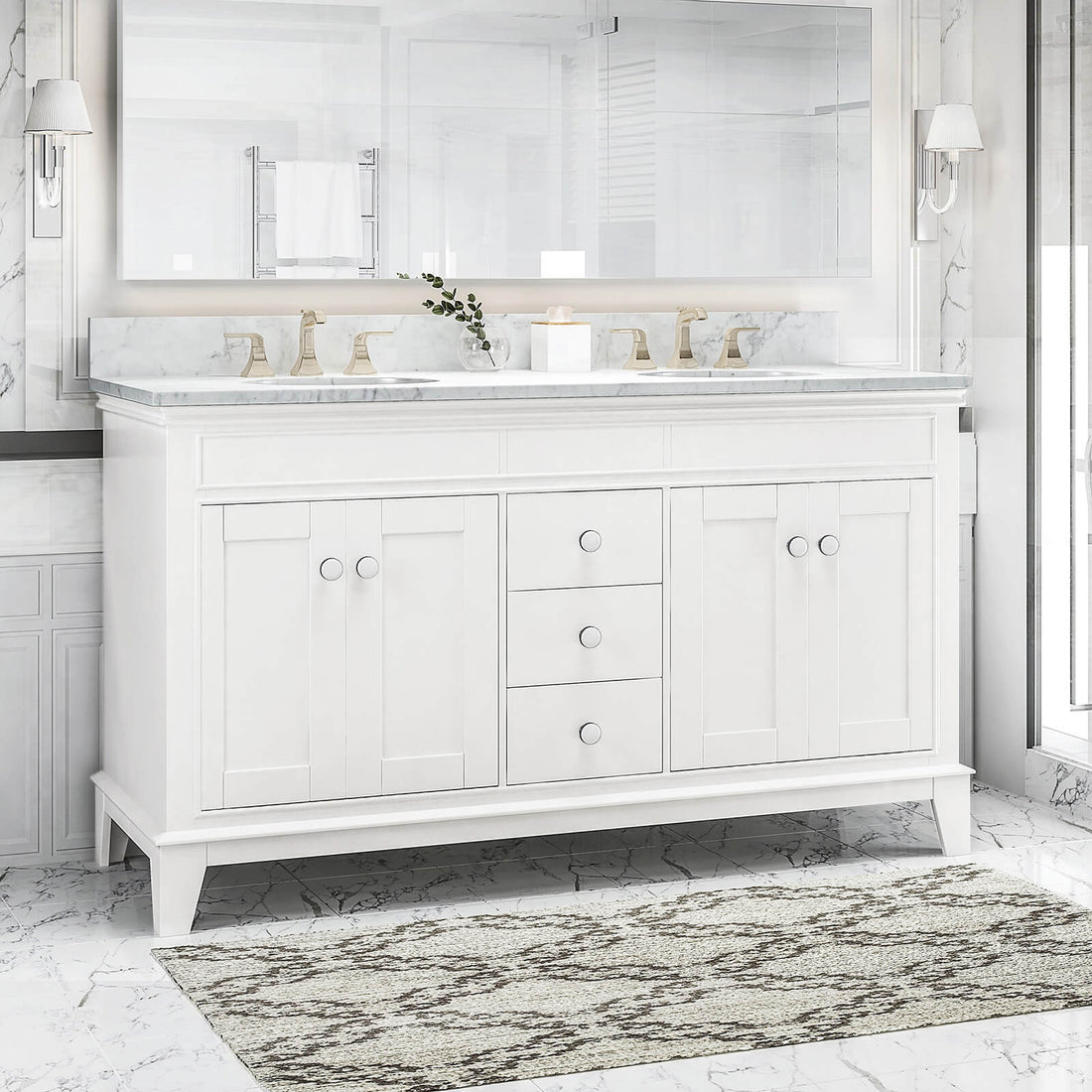 61" White Double Sink Vanity with Backsplash
61" White Double Sink Vanity with Backsplash- Regular price
-
$2,269.98 - Regular price
-
- Sale price
-
$2,269.98
Quick view
Factors to Consider When Choosing the Right Bathroom Vanity Height
Ergonomics
While common vanity heights range from 30"-36", the ideal height should be chosen based on the user’s height. The best vanity height ensures that your elbows are slightly lower than the countertop when standing, so you don’t need to bend excessively or raise your arms too high when washing your hands or face.
- For users 5'0"-5'3" (152-160 cm) → A 32"-33" vanity is recommended.
- For users 5'4"-5'9" (162-175 cm) → A 34"-35" vanity is ideal.
- For users 5'10" and above (178 cm and taller) → A 35"-36" vanity minimizes excessive bending.
Impact of Sink Type
Different sink styles affect the overall height of the vanity:
- Vessel Sink: Since the sink sits on top of the counter, a vanity between 28"-32" is recommended to prevent excessive arm lifting.
- Undermount Sink: Since the sink is integrated below the countertop, a standard vanity height (30"-34") is suitable.
- Integrated Vanity Sink: These are pre-molded with a fixed height, so the vanity should be selected based on your comfort level.
User Needs
Different users have varying needs, so consider these factors when selecting vanity height:
- For children or elderly users → Choose a 30"-32" vanity or use a step stool to improve accessibility.
- For prolonged standing use (e.g., applying makeup or skincare) → Select a height suited to your stature to prevent neck and shoulder fatigue.
- For wheelchair users or seated use → A 26"-30" vanity with adequate space underneath for wheelchair access is recommended.
Bathroom Space & Aesthetic Compatibility
The vanity height should also match the bathroom's overall size and design style:
- Small Bathrooms → A slightly lower vanity reduces visual clutter and makes the space feel larger.
- Large Bathrooms → A 35"-36" vanity enhances proportion and offers more storage.
- Modern Designs → Floating vanities are typically mounted at 34"-36", providing an adjustable height with a sleek, minimalist look.
- Vintage or Rustic Styles → Often paired with vessel sinks, so vanity height should be around 28"-32" for a cohesive appearance.
Ending
Choosing the right bathroom vanity height is key to ensuring a comfortable and functional bathroom experience. Whether you opt for a standard-height vanity for universal use, a taller vanity for ergonomic benefits, or a customizable wall-mounted vanity, understanding the factors involved will help you make the best decision for your space.
More Ideas
-

Constipated on the Toilet? Giving Tree’s Tips for Faster Poop!
“I’ve been sitting here forever — my stomach feels heavy and nothing’s happening.” “Every time I go, it’s dry, painful, and sometimes even bleeds.” If any of that sounds familiar,...
-

Everything You Need to Know About Japanese Toilets
Every country has its own unique lifestyle—from how people eat and travel to, yes, how they use the bathroom. Americans often wonder why many Asians prefer squat toilets, while Asians...
-
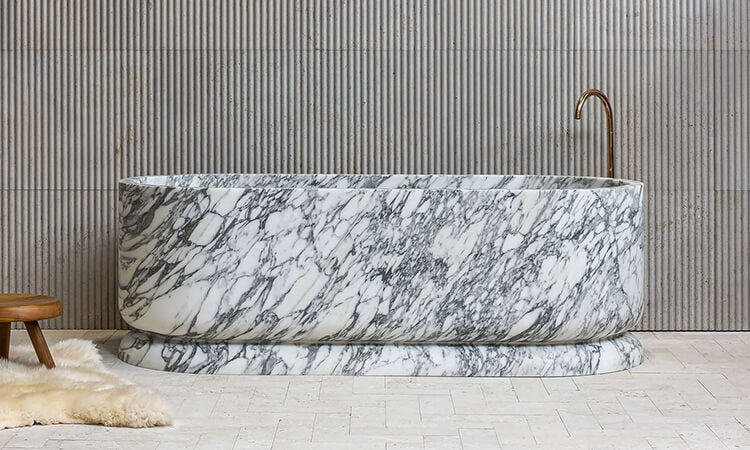
Marble Bathtub Care: 3 Steps to Keep It Looking New
Natural marble bathtubs are prized for their smooth texture and unique veining, making them the ultimate centerpiece in high-end bathrooms. But like any luxury item, they are delicate. Tiny pores...
-
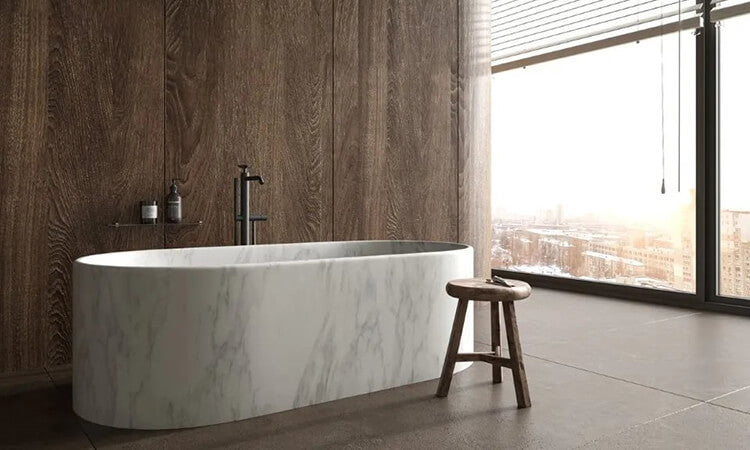
Why Marble Bathtubs Are So Expensive
When people think of marble bathtubs, two words usually come to mind: luxury and expensive. A single natural marble tub—about 5.5 feet long—can easily run anywhere from $5,000 to $15,000,...
-
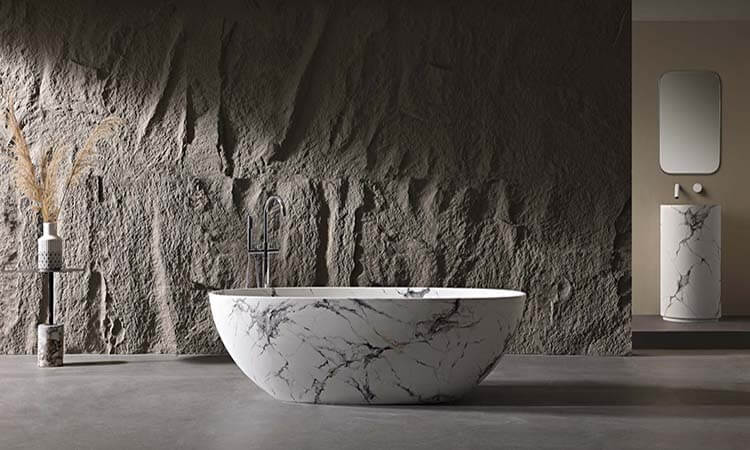
Why Marble-Textured Tubs Are the New Bathroom Favorite
In today’s design trends, bathrooms are no longer just practical spaces — they’ve evolved into personal sanctuaries that reflect taste, comfort, and lifestyle. The bathtub, once a purely functional fixture,...
-
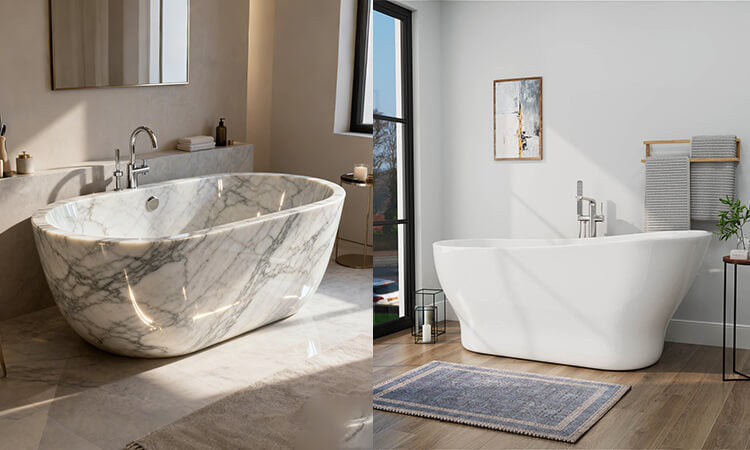
Marble vs. Acrylic Tub: What Fits Your Bathroom Best?
When it comes to designing your dream bathroom, choosing the right bathtub is all about balancing style with practicality. Marble and acrylic tubs each offer a unique experience: marble is...
















